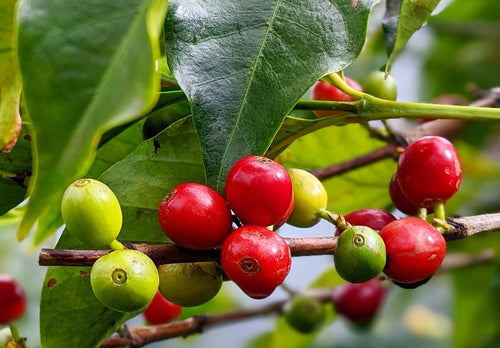02 Jul 2025
When summer hits, cold brew becomes the star of the show. Smooth, refreshing, and low in acidity, it’s a favorite among coffee drinkers looking for a cool alternative to hot brews. But if you're a coffee roaster, you know that not all beans are created equal when it comes to cold brew. So—how do you choose the right coffee for cold brew that will truly stand out?
First things first: Cold brew is not just iced coffee

We know you know this—but let’s get it out of the way. Cold brew is brewed cold, usually steeped for 12–24 hours. That long, slow extraction brings out sweetness and body, but also tends to mute acidity and brightness. That means your origin and processing method matter more than ever.
Generally, look for:
- Low to medium acidity: Too much acidity can get lost and leave the cup flat.
- Natural or honey-processed lots: These often bring sweetness and roundness.
- Varietals with depth: Bourbon, Caturra, Castillo, and SL28 are good examples.
So what’s the best coffee for cold brew?
That depends on your style (and your customers), but know that some coffees just work better for cold brew, thanks to their natural flavor profiles:
- Guatemala: Well-structured and sweet, often with cocoa, stone fruit, or spice. Great for clean, refreshing cold brews with a bit more brightness.
- Brazil: Think nutty, chocolatey, low-acid. A go-to foundation for smooth cold brews.
- Colombia: Versatile and structured, with notes of red fruit, caramel, or even tropical fruit in the right lots.
- Ethiopia (Natural): For roasters aiming for a fruit-forward, vibrant cold brew that doesn’t need added sugar.
- El Salvador: Balanced, sweet, and approachable with crisp dried fruit and spice notes.
Of course, these are just starting points—what really matters is the lot itself.
Look At The Processing Methods

Naturals and honey-processed coffee beans tend to retain more sugar, which makes them excellent for cold brew. Washed coffees can still be amazing—but you’ll need to find the right one with enough body and sweetness to come through.
Don't just cup hot—taste it cold

Coffees that taste incredible as espresso or pour-over might not hold up as well in cold brew. That's why we always recommend cupping with cold brew in mind.
Some things to pay attention to when tasting:
1. Does it hold up with dilution?
2. Is it still sweet once it cools?
3. Is there enough body, or does it feel like coffee-flavored water?
Some of our roaster partners even run small-batch test brews using toddy or full immersion cold brew setups before committing to a new lot. Smart move.
Blends vs. Single Origins

There’s no right answer here. Blends can give you consistency and control—perfect if you’re scaling a cold brew product. But a great single origin? That’s where the fun starts.
A natural Colombia with ripe fruit and chocolatey base notes? Magic. A clean Brazil with hazelnut and toffee? Easy crowd-pleaser. A floral, funky Ethiopian? Okay, you might split the room—but in the best way.
TL;DR: The best coffee for cold brew is…
- Sweet, low-to-medium acidity
- Big on body
- Comforting or surprising (your choice)
- Tastes good cold, not just on the cupping table
Need ideas? We’ve got coffees that check the boxes
We keep a rotating selection of cold brew-friendly coffees in stock—traceable, thoughtfully processed coffees from producers we know and trust. Whether you’re experimenting with a new summer lineup or perfecting your cold brew blend, it’s worth browsing what's fresh.
Check out our latest coffees here—or just shoot us a message for recommendations. We’re always happy to geek out over cold brew.
Final Thoughts...
Cold brew might be easy to drink, but finding the right green coffee for it? That takes some thought. If you’re roasting for summer, now’s the time to explore origins and processes that bring sweetness, depth, and clarity to the cold cup. Your customers (and their reusable tumblers) will thank you.

